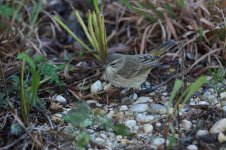I have the Lumix G9 and have looked very,very hard at the OM-1 and so far the OM-1 has not knocked the G9 off the top spot.
I like Olympus a lot and do use three Ollie cameras but when it comes to wildlife it is the system. Olympus/OMDS only provide Sync-IS with a few of their top very expensive Pro lenses whereas Lumix go Dual-IS with practically all of their OIS lenses. And that Dual2 is utterly insane, I can wave the Leica 100-400 around like a ping-pong bat hand-held whilst shooting. That stability aids focusing whilst panning.
The image quality is basically the same. The G9 has a a very slight edge over the OM-1 on dynamic range and read noise, etc. Check the numbers over at "Photons to Photos".
For instant focusing and taking pictures of the cat in the coal hole at midnight, again the G9 has a slight edge. Where the G9 has lost the plot taking birds in flight, it's usually where the wrong focus mode is used. It has no less than four customisable AFC/AFF focus modes.
Random snapshot point camera up and push the button, sooc jpeg. And it had to be quick because we were suddenly invaded by the flock of seagulls, and then they were gone, no time to set up, just point and shoot.
G9 PL100-400 at 400mm f/8 1/1000 ISO 800 hand held.
I like Olympus a lot and do use three Ollie cameras but when it comes to wildlife it is the system. Olympus/OMDS only provide Sync-IS with a few of their top very expensive Pro lenses whereas Lumix go Dual-IS with practically all of their OIS lenses. And that Dual2 is utterly insane, I can wave the Leica 100-400 around like a ping-pong bat hand-held whilst shooting. That stability aids focusing whilst panning.
The image quality is basically the same. The G9 has a a very slight edge over the OM-1 on dynamic range and read noise, etc. Check the numbers over at "Photons to Photos".
For instant focusing and taking pictures of the cat in the coal hole at midnight, again the G9 has a slight edge. Where the G9 has lost the plot taking birds in flight, it's usually where the wrong focus mode is used. It has no less than four customisable AFC/AFF focus modes.
Random snapshot point camera up and push the button, sooc jpeg. And it had to be quick because we were suddenly invaded by the flock of seagulls, and then they were gone, no time to set up, just point and shoot.
G9 PL100-400 at 400mm f/8 1/1000 ISO 800 hand held.









